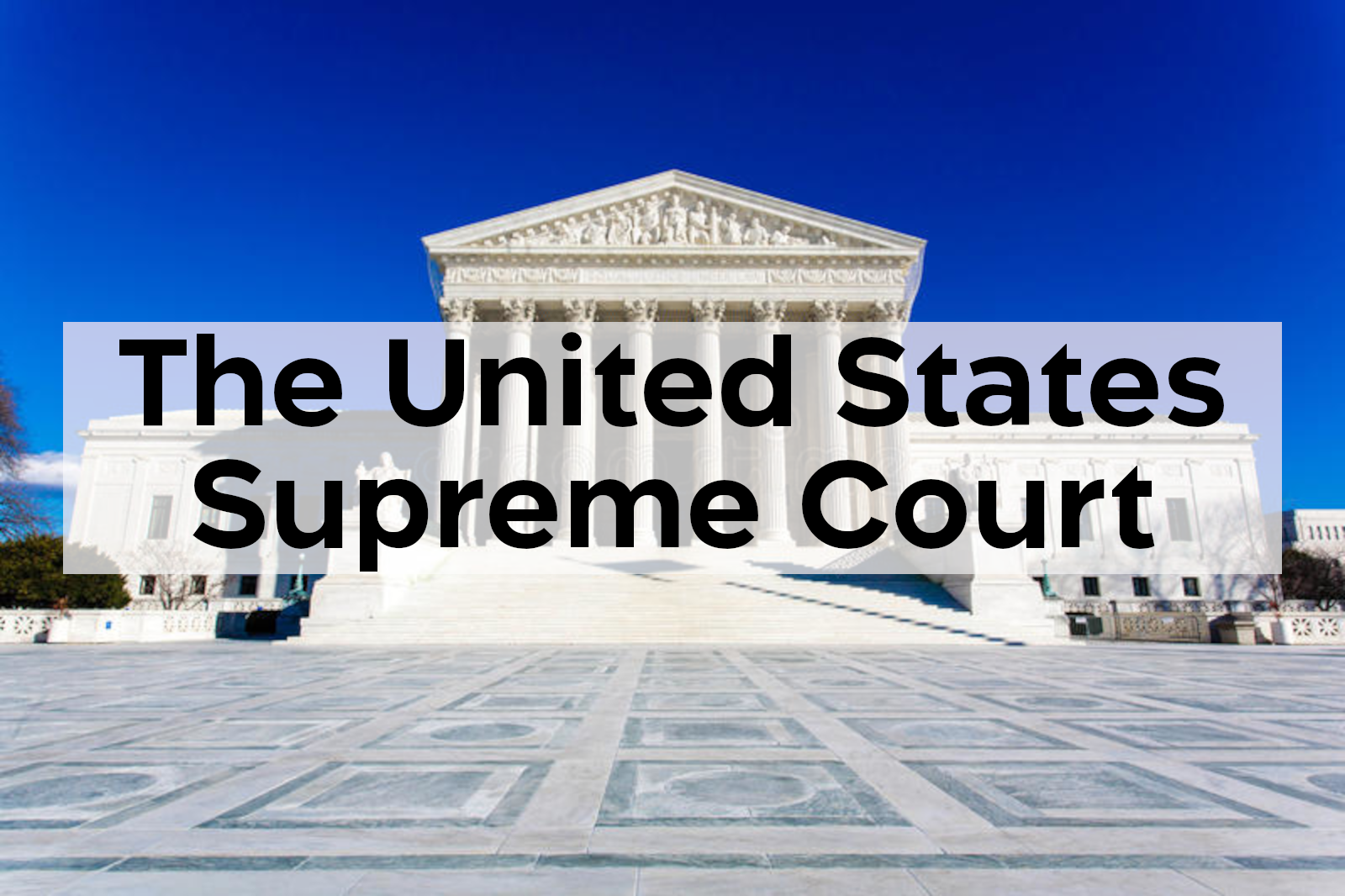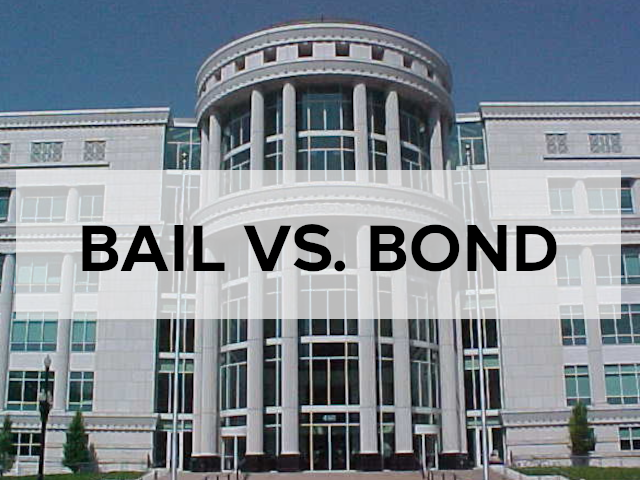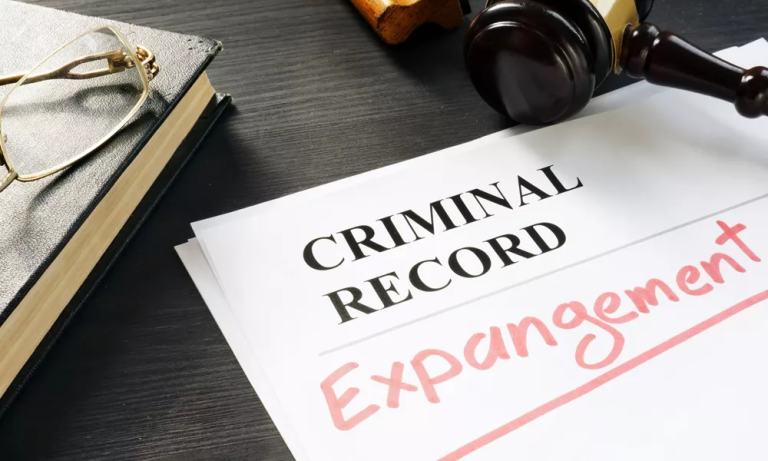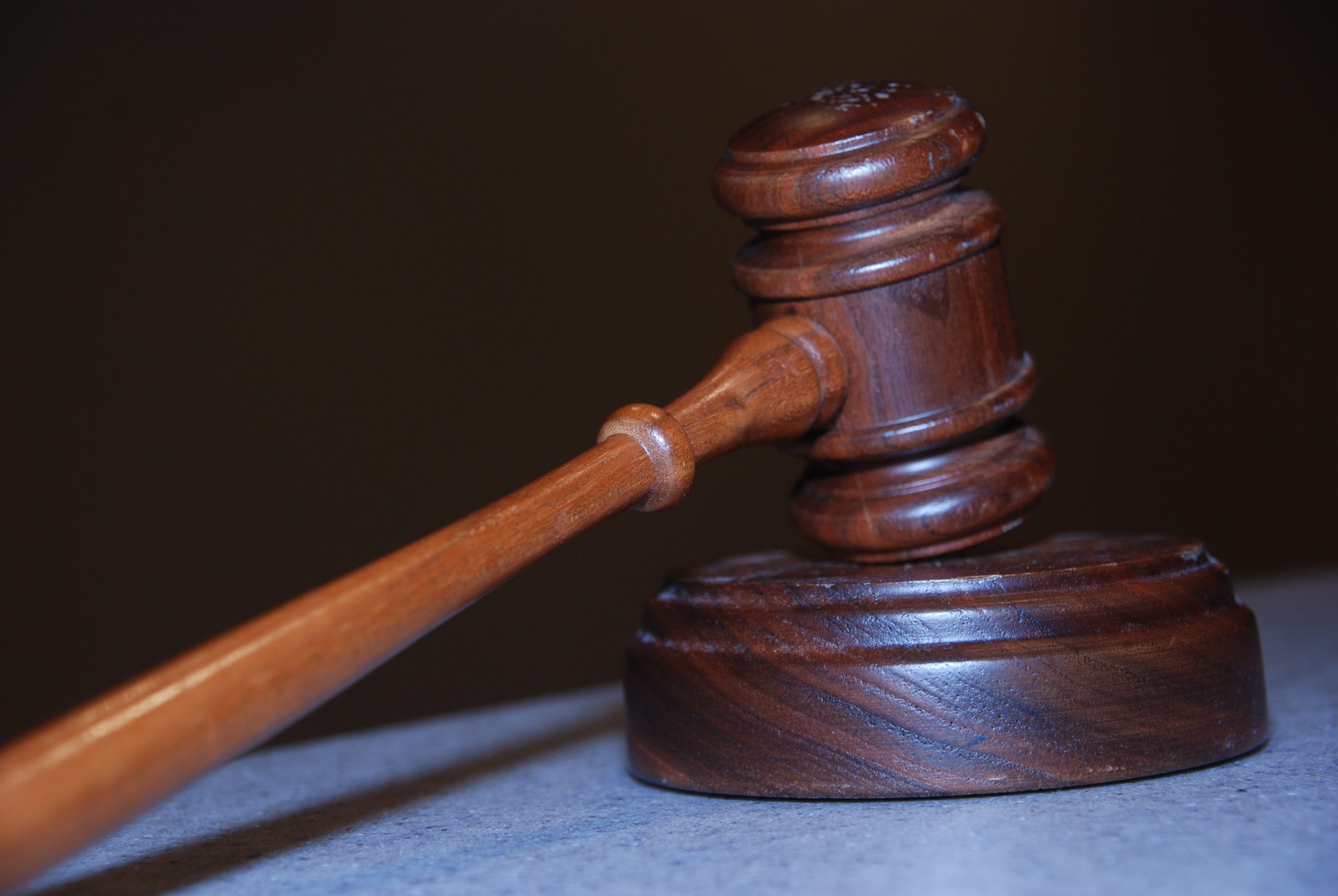DISCLAIMER: Altiorem Legal Services (hereinafter, “Altiorem”) cannot and does not provide legal advice. Altiorem is not a law firm; Altiorem’s staff are not attorneys, cannot act as attorneys, and do not act as attorneys; and any information provided by Altiorem in this article or otherwise is not a substitute for legal advice from an attorney. The information contained in this article should not be construed as legal advice, as it is not intended to be legal advice; the information in this article is provided for educational purposes only. Again, none of the information provided in this article should be construed as legal advice, and nobody should rely on or use the information contained in this article in their legal matters.
THE SUPREME COURT’S ESTABLISHMENT
The Supreme Court was established by the United States Constitution and was assembled in 1790.1See Supreme Court of the United States, History and Traditions, https://www.supremecourt.gov/about/historyandtraditions.aspx (last visited Mar. 4, 2023).
Specifically, the Supreme Court was established by the Judiciary Act of 1789, which was signed into law by President George Washington on September 24, 1789, but the Court’s first session was held in February of 1790.2See The Judiciary Act of 1789, September 24, 1789, ch. 20, 1 Stat. 73.
APPOINTING A SUPREME COURT JUSTICE
The Appointment
The President of the United States nominates someone for a vacancy on the Supreme Court, and the Senate votes to confirm the nominee.
The process for nominating and confirming a Supreme Court Justice in the United States involves several steps. Here is a more detailed description of the process:
- The President selects a nominee: When there is a vacancy on the Supreme Court, the President selects a nominee to fill the position. The President’s choice is typically someone who shares their political and judicial philosophy.
- The Senate Judiciary Committee holds hearings: The Senate Judiciary Committee is responsible for holding confirmation hearings for the nominee. During these hearings, the nominee is questioned by committee members about their judicial record, legal philosophy, and other relevant matters.
- The committee makes a recommendation: After the confirmation hearings are complete, the Senate Judiciary Committee votes on whether to recommend the nominee to the full Senate. If a majority of the committee members vote in favor of the nominee, the nomination goes to the full Senate.
- The Senate votes on the nomination: Once the nomination is sent to the full Senate, the Senators debate and vote on whether to confirm the nominee. A simple majority vote is required for confirmation.
A person appointed to the Supreme Court is called a “Justice.” The Constitution states that Justices “shall hold their Offices during good behavior.” If the Justice chooses to be in office, they can be in office. They can only be removed from the Supreme Court by impeachment.3See Supreme Court of the United States, FAQs – General Information, https://www.supremecourt.gov/about/faq_general.aspx (last visited Mar. 4, 2023).
Impeachment or Retirement
A Justice may remain in their positions for as long as they choose and as long as they continue to demonstrate “good behavior” while in office.4See U.S. Const. art. III, § 1. However, they can also be impeached, as described as follows.
The Constitution establishes the process by which a Justice can be removed from the Supreme Court. Article II, Section 4 of the Constitution provides that “The President, Vice President and all civil Officers of the United States, shall be removed from Office on Impeachment for, and Conviction of, Treason, Bribery, or other high Crimes and Misdemeanors.” This means that a Justice can only be removed from office by the process of impeachment, which involves bringing charges against the Justice and holding a trial in the Senate.5See U.S. Const. art. II, § 4.
In practice, Justices of the Supreme Court generally serve on the Court for many years, and most choose to retire voluntarily rather than being impeached or otherwise removed from office. The length of a Justice’s tenure on the Court can have significant implications for the balance of power on the Court and the interpretation of the Constitution and federal law.
The President’s Nomination of a Chief Justice
Under Article II, Section 2 of the Constitution, the President of the United States has the authority to nominate a Chief Justice of the United States (the highest level of Supreme Court Justice) to the Supreme Court, subject to the advice and consent of the Senate.6See U.S. Const. art. II, § 2. After the President nominates a Chief Justice, the Senate holds a vote to confirm the nominee, the same as for other Supreme Court nominees.7See U.S. Const. art. II, § 4.
The nominee is typically first reviewed by the Senate Judiciary Committee, which holds hearings to evaluate the nominee’s qualifications and fitness for the position. The Committee then makes a recommendation to the full Senate, which holds a vote on the nomination. As mentioned before, a simple majority vote is required for confirmation.8See United States Senate, Supreme Court Nominations (1789-Present), https://www.senate.gov/legislative/nominations/SupremeCourtNominations1789present.htm (last visited Mar. 4, 2023).
More About the Nuances of Being a Justice
The Chief Justice is the highest-ranking member of the Supreme Court and serves as the presiding officer of the Court’s proceedings. The Chief Justice also has certain administrative responsibilities, such as overseeing the allocation of cases to the other Justices and managing the Court’s budget and personnel.9See Supreme Court of the United States, The Court and Its Traditions, https://www.supremecourt.gov/about/traditions.aspx (last visited Mar. 4, 2023).
The Constitution does not specify qualifications for Justices, such as age, education, profession, or native-born citizenship. This means that a Justice does not necessarily have to be a lawyer or a law school graduate, and non-U.S. citizens could technically serve as Justices. In practice, however, all Justices appointed to the Supreme Court thus far have been trained in the law, and most have been lawyers or judges before being appointed to the Court.10See id. This is because the legal system and the work of the Court require a deep understanding of legal principles, precedents, and the Constitution itself.11See Supreme Court of the United States, FAQs – General Information, https://www.supremecourt.gov/about/faq_general.aspx (last visited Mar. 4, 2023).
Legal Training for Non-Attorney Justices
While some Justices of the Supreme Court did not hold law degrees, such as James F. Byrnes and Robert H. Jackson, they still had significant legal experience and training.12See id.
For example, Justice Byrnes served as a member of Congress, Governor of South Carolina, and Secretary of State before being appointed to the Supreme Court. During his time in government, he worked on various legal and policy issues, which gave him a strong understanding of the law and its practical applications.13See Oyez, James F. Byrnes, https://www.oyez.org/justices/james_f_byrnes (last visited Mar. 4, 2023).
Justice Jackson also did not attend law school, but he worked as a lawyer and legal advisor for many years before being appointed to the Supreme Court. He served as Solicitor General, Attorney General, and a U.S. Court of Appeals judge before being appointed to the Supreme Court.14See Oyez, Robert Houghwout Jackson, https://www.oyez.org/justices/robert_h_jackson (last visited Mar. 4, 2023).
In general, “legal training” can encompass a wide range of experiences and education, beyond simply earning a law degree. For example, some Justices have worked as law clerks for other judges or Justices, which can provide them with valuable insights into the legal system and the work of the Court. Others have worked as professors, legal scholars, or advocates on legal issues. All of these experiences can contribute to a Justice’s understanding of the law and their ability to interpret and apply it effectively.
Ultimately, the most important qualification for a Supreme Court Justice is their ability to analyze legal issues, apply legal principles, and make well-reasoned decisions based on the law and the Constitution. While a law degree can be an important part of a Justice’s legal training, it is not necessarily the only path to achieving this level of expertise.
The Judiciary Acts
The first Judiciary Act, passed in 1789, set the number of Justices at six, one Chief Justice and five Associates. The Judiciary Act of 1869 fixed the number of Justices at nine, which has remained the same since then.
SUPREME COURT RULES
Timelines
The Court holds a continuous annual term commencing on the first Monday in October and ending the day before the first Monday in October of the following year.15See 28 U.S.C. §2.
The dates for the Supreme Court’s annual term are established by federal law. Title 28, Section 2 of the U.S. Code specifies that the Court “shall hold at the seat of government a continuous session beginning on the first Monday in October of each year and continuing after that until the first Monday in October of the next year.”16See id.
This term is divided into two sessions: the October session, which runs from the first Monday in October to the end of December, and the January session, which runs from early January to the end of June. If a case is pending when the term ends, the case is continued to the next term. The Court typically issues opinions in cases argued during a given term by the end of June or early July. If a case is not decided by the end of the term in which it was argued, the Court may continue it to the next term. This means the case is set for re-argument, typically during the October session of the following term.17See Supreme Court of the United States, The Court and Its Procedures, https://www.supremecourt.gov/about/procedures.aspx (last visited Mar. 4, 2023).
Six members of the Court constitute a quorum. A quorum is the number of officers or members of a body that, when duly assembled, is legally competent to transact business.18Merriam-Webster, Quorum, https://www.merriam-webster.com/dictionary/quorum (last visited Mar. 4, 2023).
The Supreme Court Rules also specify how to file a petition with the Court and how the vote will be conducted between the Justices.
HOW TO HAVE A CASE HEARD IN THE SUPREME COURT
Writ of Certiorari
A person must go through the lower courts before petitioning to the Supreme Court.
After going through the lower courts, a person can petition the Supreme Court to hear their case. The primary means to petition the court for review is to ask the court to grant a writ of certiorari.19Stephanie Jurkowski, Writ of Certiorari, https://www.law.cornell.edu/wex/writ_of_certiorari (last updated June 2017). A writ of certiorari orders a lower court to deliver its record in a case so that the higher court may review it.20See id. The Court, however, is not obligated to hear these cases, and it usually only hears a case if it could have national significance.21United States Courts, Supreme Court Procedures, https://www.uscourts.gov/about-federal-courts/educational-resources/about-educational-outreach/activity-resources/supreme-1# (last visited Mar. 4, 2023).
Brief and Oral Argument
If the case is accepted, the case is placed on the docket. The Court will request the plaintiff to write a brief, not to exceed fifty pages, putting forth their legal issue, which the Court granted review on. Then, the case is heard in front of the court during oral arguments.
Making a Decision
Once the oral arguments are completed, the Justices decide the case by voting. Not every Justice has to agree in the vote, but a majority of the vote will make the decision.
The Chief Justice of the court assigns a Justice in the majority to write the opinion of the Court. The most senior justice in the dissent can assign a dissenting Justice to write the dissenting opinion. A dissent refers to at least one party’s disagreement with the majority opinion.22Wex Definitions Team, Dissent, https://www.law.cornell.edu/wex/dissent (last updated Sept. 2022).
When there is a tie vote, the lower court’s decision stands.23See id.
NOTABLE SUPREME COURT DECISIONS
Brown v. Board of Education, 347 U.S. 483 (1954)24National Archives, Brown v. Board of Education (1954), https://www.archives.gov/milestone-documents/brown-v-board-of-education (last updated Nov. 22, 2021).
The decision in Brown overturned the “separate but equal” doctrine. The argument was that segregated public schools violated the Equal Protection Clause. This case helped establish the basis for the civil rights movement and integration across the country.25See id.
Gideon v. Wainwright, 372 U.S. 335 (1963)26United States Courts, Facts and Case Summary – Gideon v. Wainwright, https://www.uscourts.gov/educational-resources/educational-activities/facts-and-case-summary-gideon-v-wainwright (last visited Mar. 4, 2023).
The decision in Gideon held that the Sixth Amendment right to assistance of counsel applies to criminal state trials. It stated, “Lawyers in criminal court are necessities, not luxuries.” This decision expanded the public defender systems across the United States.27See id.
Miranda v. Arizona, 384 U.S. 436 (1966)28Justia Annotations, Miranda v. Arizona, 384 U.S. 436 (1966), https://supreme.justia.com/cases/federal/us/384/436/ (last visited Mar. 4, 2023).
In Miranda, the Court found that the Fifth and Sixth Amendments to the United States Constitution require police to inform individuals in custody that they have the right to remain silent and to be assisted by an attorney. “Miranda Rights” are common knowledge across the United States now, and it keeps people informed of their rights when they are in custody.29See id.
Dobbs v. Jackson Women’s Health Organization, 597 U.S. ___ (2022)30Justia Annotations, Dobbs v. Jackson Women’s Health Organization, 597 U.S. _ (2022), https://supreme.justia.com/cases/federal/us/597/19-1392/ (last visited Mar. 4, 2023).
In Dobbs, the Supreme Court overturned the landmark case of Roe v. Wade.31410 U.S. 113 (1973). The Court determined that the Constitution does not protect the right to an abortion. This decision has led to much debate across the United States.32See supra, footnote 30.
CONTACT US TODAY!
Do you need help with understanding the Supreme Court? Let Altiorem help you today with affordable, top-quality legal services.
Expertise. We are knowledgeable, skilled, and experienced in federal courts and in drafting all manner of legal documents, such as briefs, pleadings, motions, memoranda, letters, contracts, etc. If you need a top-quality, professional, excellently written, well-researched, and compelling legal document drafted, then look no further!
Quality. We produce top-quality, properly written legal documents with impeccable grammar, punctuation, spelling, structure, flow, information, compelling legal arguments, and persuasive legal conclusions. You can see the quality of our work on our work samples page, where you can peruse and evaluate our writing, as well as our other blog posts.
Experience. Our paralegals are highly experienced in working with attorneys, other paralegals, and court personnel.
Customer Care. Navigating the Utah legal system can be daunting and confusing. Let Altiorem relieve your stress and be your guide. Altiorem has a team of professional paralegals ready to work for you. We want to give you the best chance at getting an outcome for your case that you will be happy with. We are happy to receive documents via email from you, speak with you on the phone, look through court files, or even translate documents (English / Spanish)!
Accessible. If you are interested in retaining our services, we can be contacted at (801) 855-6541 (text or call) and at altiorem@altioremlegalservices.com. If you have a project in mind that you would like us to work on, please click here to send us a project request and get a quote. Alternatively, you can send us an email detailing the work you need to be performed, and a real person will respond promptly.
Thank you for your attention and consideration.



